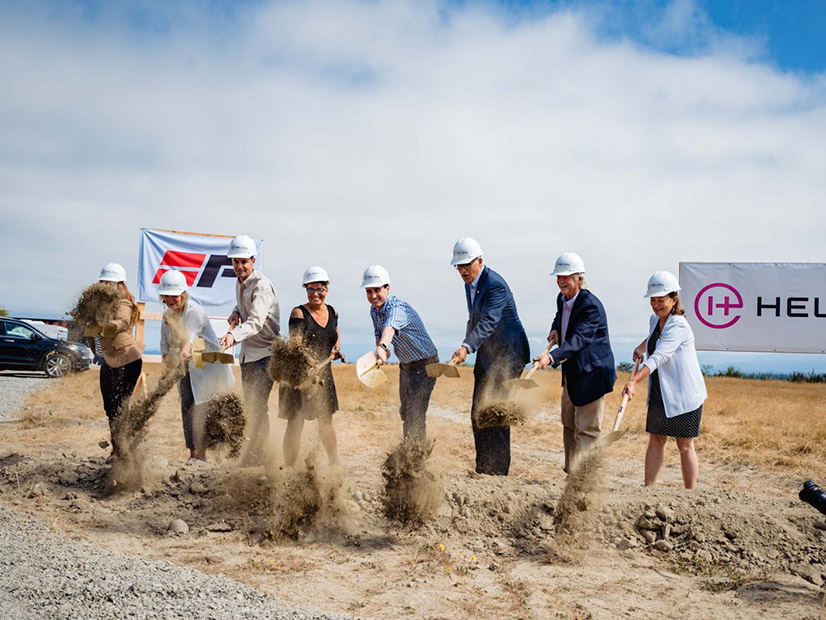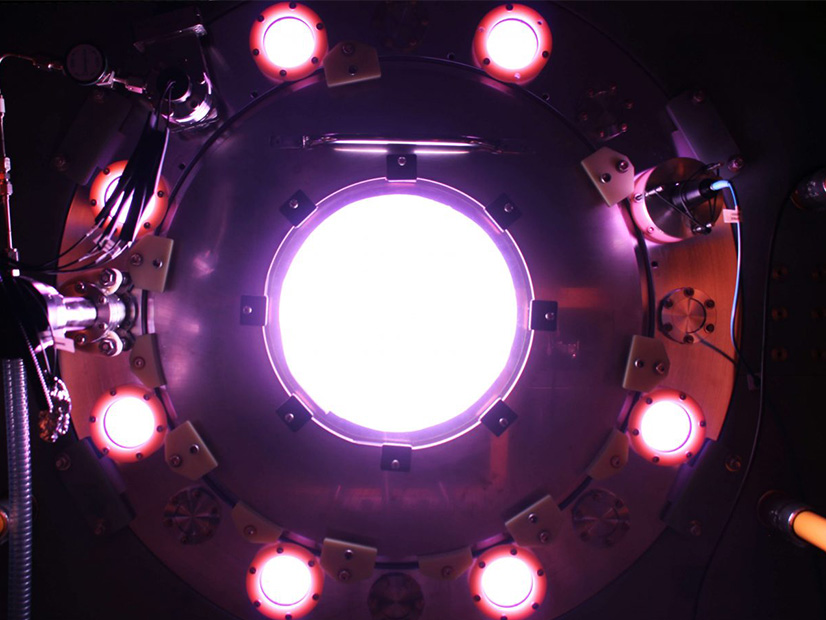
A Washington-based fusion reactor project is radically expanding its operation.
Last week, Helion Energy broke ground in Everett on a 154,000 square-foot research and manufacturing facility to be accompanied by a 30,000 square-foot auxiliary building with completion dates expected in early 2022.
Helion currently operates out of a 33,000 square-foot building in the nearby Seattle suburb of Redmond. The company expects to increase its workforce from 60 to 150 employees along with the physical expansion. In 2015, Helion had 11 employees.
“We fundamentally need more space,” Helion co-founder and CEO David Kirtley told NetZero Insider.
Helion is one of at least 10 ventures worldwide that are trying to develop a commercially viable fusion reactor to produce electricity.
“We need fusion energy now to halt the worsening impacts of climate change. … That’s where the innovative work being done by organizations like Helion comes into play,” Gov. Jay Inslee said at last Tuesday’s groundbreaking. “Some call fusion energy ‘the holy grail’ of energy, because it has zero carbon emissions, its production is not hindered by changes in the weather, and it is fueled by the most abundant element in the universe: hydrogen. I am proud to support Helion Energy and your goal of becoming the first to commercially provide fusion-made carbon-free electricity.”
Last fall, Helion’s prototype reactor finally produced a temperature of 100 million degrees Celsius for a fraction of a second — a threshold that scientists believe is needed for practical fusion power. While government and academic fusion ventures have hit that benchmark, Helion is the first private operation to do so, Kirtley said.

A fusion reactor ideally will be smaller, cheaper and safer than the huge fission power reactors that currently dot the world, but so far no one has been able to create nuclear fusion outside of a hydrogen bomb, in which nuclear fission sparks the explosion that leads to fusion. Nuclear fusion occurs naturally in our sun and the stars.
Fusion slams together the cores of two atoms to create the core of one new atom. In today’s fusion efforts, the cores of two hydrogen atoms are crunched to create a new helium atom — with the resulting energy being eyed to create electricity. The hydrogen atoms are actually deuterium, an isotope of hydrogen that includes a neutron.
Fusion is supposed to be dramatically cheaper than fission reactors because of the relatively small amount of deuterium needed — as opposed to processed uranium fuel used for fission. Water is cheaper compared to uranium, and the waste disposal problem is tiny compared with trying to find places to put used nuclear waste and spent fuel rods.
But the physics and engineering of splitting an atom is much simpler than slamming two atoms together to create a new one. Also, a fundamental problem with today’s fusion effort is that it takes more energy to create potential fusion than is generated by the reaction. Fusion won’t be successful until the reaction produces a significant net gain in energy.
Missing the Right Stuff
Fusion has existed on the drawing board since the 1920s, but it has been missing the right temperatures, the right atomic cores, the right slamming speeds, the right conditions of the plasmas to envelope the colliding atom cores, the right oscillating magnetic fields enclosing the reaction, the right balance of these forces and other factors.
A major safety factor in fusion is that achieving it takes a finicky house of cards in which the slightest glitch shuts down the process.
The new Everett site will hold Helion’s seventh prototype. Helion had named each reactor incarnation after bigger and bigger Starbucks coffee sizes, topping out with “Trenta.”
“We ran out of Starbucks sizes,” Kirtley said.
The seventh reactor will be named “Polaris” after a helium-burning star. The Everett site will be named “Antares” after another helium-burning star.
Kirtley declined to say how fast Helion hopes to create commercially viable fusion power, saying numerous practical engineering issues remain.
In a 2019 newsletter of the physics-oriented American Physical Society, fusion power skeptic Daniel Jassby, a retired Princeton Plasma Physics Lab scientist, wrote that he did not believe practical fusion power is feasible.
He noted that Helion, General Fusion, and Tri-Alpha Energy (now TAE Technologies) all said several years ago that they would have practical fusion by 2019 or 2020 — and none have hit those targets.
The world’s largest fusion project is ITER in southern France, which is tentatively aiming at producing viable fusion power by 2040. This project is backed by 35 nations, including the U.S.
Kirtley believes Helion’s project can get commercially online quicker than many other projects because it is a smaller set-up with a different approach.
Many fusion reactor projects call for a steady maintenance of the 100-million-degree Celsius threshold. Helion’s approach works vaguely like pistons in an engine — producing 100-million-degree temperatures in pulses. Helion’s reactor can produce such a nanosecond pulse once every 10 minutes. The company is aiming to produce a nanosecond pulse every second.
“We have quite a few engineering hurdles we are working on,” Kirtley said.
Attracting Funders
In its most recent round of fundraising, Helion picked up $40 million. Its main investors are billionaire Dustin Moskovitz, a co-founder of Facebook; Reid Hoffman, a co-founder of LinkedIn; the U.S. Department of Energy; Capricorn Investment Group; and Mithril Capital Management.
In 2018, Mithril released a report on fusion reactors that said: “Private companies are performing cutting-edge research. The scale of private investment means that some private efforts are further along than academic, and by some measures, national laboratory, teams.”
“For fusion to be commercially viable, not only does it have to ‘work’, but it must be ‘better’ than the alternatives in one or more dimensions. Among those are operational flexibility, reliability, environmental impact, proliferation impact, the balance of capital/operating costs, and non-technical factors such as public acceptance, aesthetics, or technological prestige,” the report said.
The report also said that the time needed to achieve commercial fusion exceeds the 7-to-10-year timescale of many venture capital funds, “suggesting that some investors’ interests may not align with long-term goals.
“Such investors may be motivated to achieve key milestones that lead to an increase in perceived value and liquidity, regardless of whether these milestones genuinely advance the effort; others may redirect resources toward ancillary uses of fusion technologies (e.g., particle-beams for materials processing and medical applications).”


